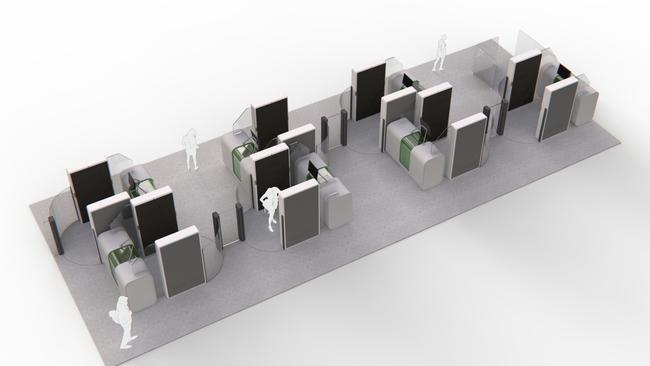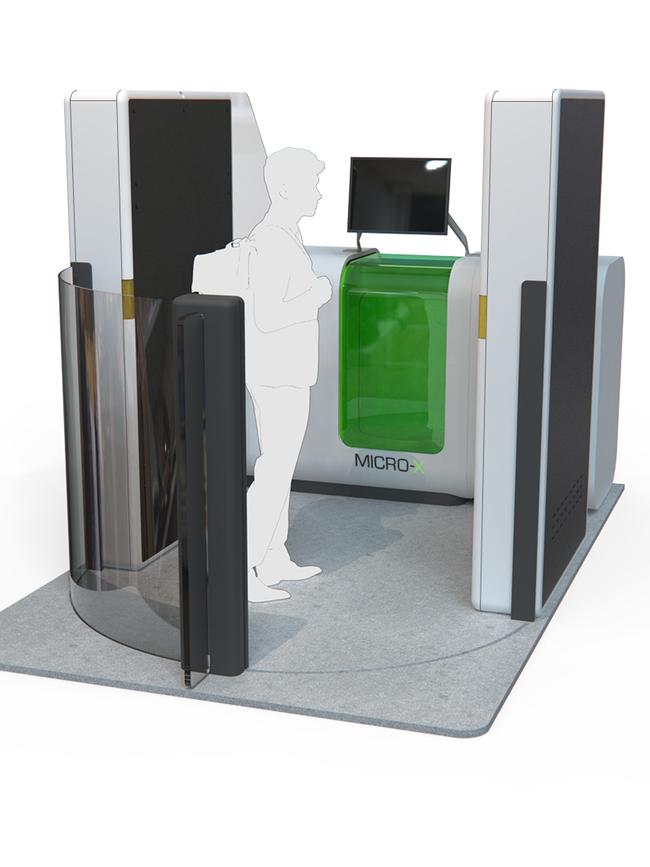Micro-X technology to be used for airport security screening
Miniaturised x-ray technology from Adelaide firm Micro-X is set to help US airports tackle big security queues through game-changing automation.

Australian technology is set to help US airports tackle big security queues through game-changing automation.
Adelaide-based ASX-listed company Micro-X has teamed up with Elenium Automation and Monash University to deliver a “passenger self-screening checkpoint” design to the Department of Homeland Security and Transportation Security Administration (TSA).
Micro-X chief scientist Brian Gonzales said the concept would effectively turn the “single lane” system of security screening, into a seven or eight-lane highway.
“The way that conventional screening operates is like a conveyor system or assembly line, in that there are multiple steps that are spread out and everybody does them in a line,” Dr Gonzales.
“In the US that means everyone has their ID checked, they have to take all of their property and put it onto a conveyor belt, then they have to line up and go through some sort of body scanner and then go back and collect their items.”
He said their self-screening checkpoint combined all of those functions into a single module, where passengers could simultaneously x-ray their bags and their body.
Up to eight modules were able to fit in the same space as the typical airport x-ray machine and body scanner set-up, dramatically increasing the throughput of passengers.
“Our system uses a lot of automation to look for potential threats and then it enables passengers to resolve low level alarms, like you forgot to take a water bottle out of your bag, or the keys out of your pocket,” said Dr Gonzales.
“TSA officers would then resolve real alarms, such as someone trying to bring something through that they shouldn’t.”

As well as increasing the pace of security screening, Dr Gonzales said the checkpoint would make air travel even safer, by bringing all the steps together.
“What happens now is that every single one of your bags is screened one at a time, and there’s no association of the bag with a passenger or what’s on the passenger,” he said.
“By bringing all of the screening steps into one module you have a higher level of security because you can bring all that information together to determine is there something suspicious about the sum of all the parts, or do the sum of all the parts make me more confident this is a completely benign passenger.”
Development of the miniaturised x-ray technology required was in its final stages, and Dr Gonzales was hopeful the modules may be ready for in-airport testing by 2025.
Although the Department of Homeland Security was helping to fund the work, it was possible the technology could appear in European or even Australian airports before those in the US.
Dr Gonzales said like everything in aviation there was no room for error, and there was no question the self-screening checkpoints would need to be perfect before being rolled out.
“A huge part of the work that we’re doing now is engaging with real passengers and engaging with airports to get their feedback about how we’re designing this,” he said.
“This is a really awesome system, it’s a great idea technology-wise but it only works if people feel comfortable and people understand it, if it’s intuitive.”




To join the conversation, please log in. Don't have an account? Register
Join the conversation, you are commenting as Logout